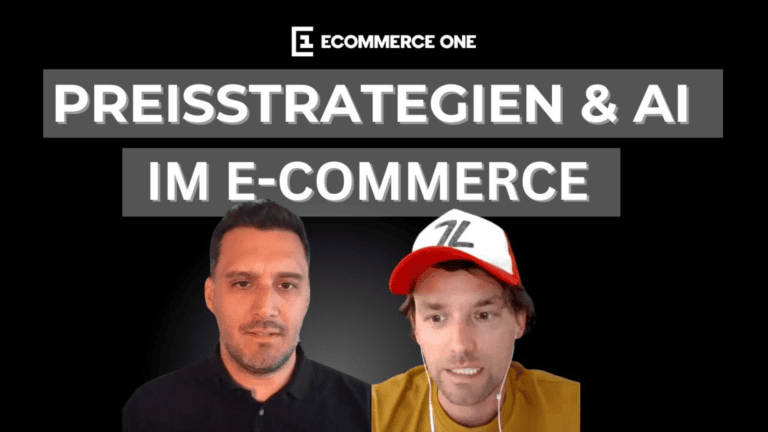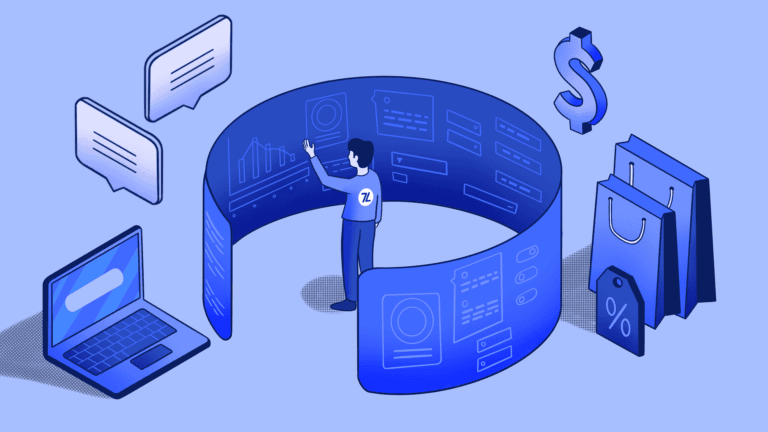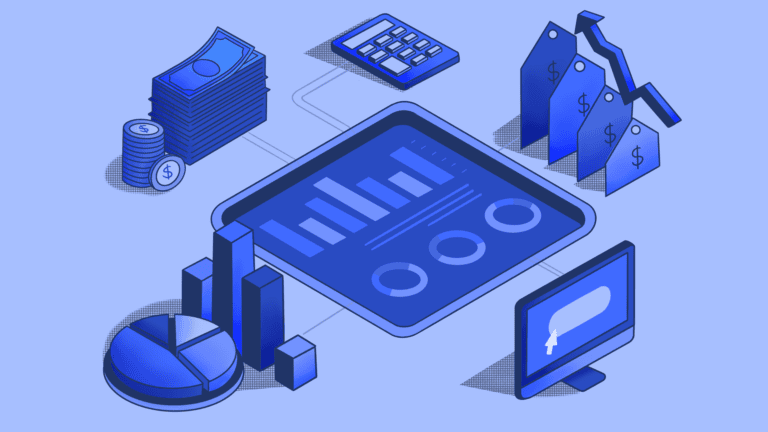| Selling on Amazon offers easy access to a global consumer base that is ready to buy. However, sales success on Amazon doesn’t just happen. Sellers need to understand the Amazon ecosystem and adjust their strategy accordingly. Having a smart pricing strategy is key to finding success. In this article, we present common pricing strategies for private label products and commodities and explain how companies can drive success in this competitive marketplace by harnessing the latest AI-based technology. |
The Key to Amazon Success: The Right Pricing Strategy
As the world’s largest e-commerce platform, Amazon is an important, if not the most important, distribution channel for many retailers. For years, Amazon has been pushing third-party vendors on its platform; according to Amazon, vendors’ sales grow by an average of 52% per year.
Amazon Vendors vs. Amazon Sellers
Amazon vendors are manufacturers whose products are distributed by Amazon, whereas sellers use Amazon as a marketplace to distribute products in their own name.
However, given the large number of sellers (2 million active sellers as per 2022), the platform is a highly competitive environment, and sales success is nowhere near evenly distributed.
Pricing is a key factor for Amazon success.
In contrast to direct distribution, merchants distributing products through Amazon need to factor the platform’s commission fees into their pricing. Fees were raised several times in recent years, ranging from 7 to 20 percent in 2022.
When selling outside of Amazon, unwise pricing decisions typically lead to minor profit losses; however, when selling on Amazon, having the wrong pricing strategy can have much more serious consequences.
The main reason: Price is a pivotal factor for achieving high rankings on Amazon, and – similarly to Google – sales on Amazon tend to focus on the first two pages of search results.
In addition to optimized keywords and product page design, conversion rate is one of the most important ranking factors for search results on Amazon, with pricing being the decisive key parameter for conversion rate.
Offering low prices – whether through temporary discounts or permanent price points – works well for most products. Mastering Amazon SEO allows merchants to lower their budgets for Amazon ads, as it helps them increase their organic sales and thus boost their profits.
Like many suppliers who sell generic products, commodity sellers face particular price pressure. They can’t rely on factors such as brand image or product features to increase consumers’ willingness to buy. Their key to higher Amazon sales is winning the Buy Box.
What is the Amazon Buy Box?
When a customer is about to purchase a product (ASIN) that is offered by multiple merchants, Amazon suggests one of them to the prospective buyer. The relevant merchant will automatically be shown as the shipper in the customer’s shopping cart (Buy Box).
80 to 90 percent of customers looking to buy a commodity item will purchase from the default vendor suggested through the Amazon Buy Box. While Amazon won’t disclose which criteria sellers need to fulfill for winning the Buy Box, pricing seems to be a key factor. And it remains a fact that most customers do not actively select a specific vendor, but simply buy from the default merchant suggested by Amazon.
Typical Amazon Pricing Strategies and Their Drawbacks
Drawing on their sales and financial targets as well as their primary costs, merchants can set a predefined price range for their products that allows them to weather market price fluctuations and still sell at a profit. The ideal price is competitive yet high enough to offer an attractive profit margin. But how can sellers ensure they hit this ideal price point as often as possible?
Manual Pricing
Sellers with a smaller selection of products can monitor their competitors’ prices manually. Depending on their business strategy, they can keep undercutting their competitors slightly without any major effort. However, the larger the product selection, the more complex and inefficient this approach tends to become. To remedy this, most sellers rely on digital support for their market monitoring and pricing on Amazon.
Rules-Based Dynamic Pricing on Amazon
By searching for keywords such as Amazon Repricing or Amazon Repricers, sellers will find tools that automatically adjust prices according to predefined rules. Sellers can integrate these dynamic pricing tools for Amazon with their seller accounts via Amazon’s API.
Typical repricing rules:
- Competition-based: Most of the pricing rules that users can choose from are competition-based. For example, the tool lets users define a rule to maintain a fixed price gap, such as “Always undercut the price of competitor X for [ASIN] by 10%”.
- Sales-based: The software automatically lowers the price gradually to help sales reach the desired target as quickly as possible.
- Demand-based: The software lowers prices at times of low demand and raises prices as demand increases, allowing sellers to maximize profit.
The downside of traditional repricing tools is that they aren’t able to adequately reflect the complexity of market activity. Merchants frequently forego profit by linking prices to just a single or a handful of rules. Most tools also fail to take into account any relevant internal factors, such as inventory levels or historical data.
Moreover, once defined, these tools stick to the rules even if the competitive landscape changes. This means that users must review the rules manually, and they need to do so on a regular basis. Given the fast pace of the Amazon business, this is anything but ideal.
Some repricers do allow users to combine pricing rules to better reflect the complexity of pricing. However, this results in an update schedule that is hard to keep track of, as different rules need to be updated at different and sometimes conflicting times. While rules-based dynamic pricing is indeed an upgrade over manual pricing, there is now an even better way for merchants to optimize their pricing.
Benefits of AI-based Dynamic Pricing on Amazon
The latest generation of repricing tools relies on artificial intelligence. Machine learning algorithms draw on historical sales and product data, as well as external data sources such as seasonal variations and competitor data. They consider a much larger number of pricing factors when calculating optimal prices, and they also (semi-) automatically learn from market feedback, adjusting their output to help users achieve higher profits every time.
Especially private label distributors, who do not compete exclusively on price, must be able to determine whether a particular factor will improve or reduce their target group’s willingness to buy from them. AI-based tools can detect complex patterns that are difficult to identify manually, helping users improve their profit margins more effectively than traditional repricing tools.
The most advanced AI-based dynamic pricing method for Amazon is predictive pricing. It is based on machine learning pricing, but also incorporates powerful forecasting and optimization algorithms.
The benefits:
- Steer pricing strategy towards specific targets such as profit, revenue, sales, etc.
- Accurate sales and profit forecasts
- Holistic recommendations for price optimization, taking into account the full spectrum of pricing factors

Latest Trends in AI-powered Pricing Tools
As technology continues to advance, AI-powered pricing tools for Amazon sellers are becoming more sophisticated, offering greater precision and adaptability in dynamic pricing strategies. Here are some of the latest trends and features in this field:
1. Rapid Market Analysis
Modern AI pricing tools enable rapid market analysis, allowing merchants to quickly adjust their prices in response to market changes. This capability is essential for staying competitive in the fast-paced Amazon marketplace.
2. Integration with Amazon’s New APIs
Amazon has introduced new APIs to help sellers manage their listings and prices more efficiently. Tools leveraging these APIs can provide more accurate and timely adjustments. For instance, the Selling Partner API (SP-API) offers a more robust and scalable solution for data integration, allowing for seamless synchronization of pricing strategies with Amazon’s backend systems.
3. Enhanced Machine Learning Algorithms
Recent advancements in machine learning have led to the development of more complex and accurate pricing algorithms. These algorithms can analyze vast amounts of data, including customer behavior, competitor prices, and historical sales trends, to predict optimal prices with higher accuracy. Companies like 7Learnings are utilizing advanced predictive analytics to help sellers forecast demand and adjust prices proactively.
Synchronizing Marketing and Sales for Maximum Profit
Cutting-edge pricing technology is of little help to Amazon sellers if they fail to synchronize their pricing and marketing activities. Most merchants neglect the strong interdependence between these two areas of business. Instead, they operate on a simple premise: “If we spend more money on marketing activities – specifically Amazon ads – we have to offset this cost through profits from pricing.” In doing so, they ignore the following facts:
- While high Amazon ad spend to promote products at competitive prices does increase sales, the seller’s profit margin may drop to zero. In a worst case scenario, this may incur losses for the seller.
- While running ads for higher-priced products may attract a lot of users to the product page, it will also incur high costs (as Amazon ads work on a cost-per-click basis) while conversion rates remain low.
- Even if a seller manages to place ads at a moderate cost-per-click rate, and their products convert well, a campaign may still backfire if it creates higher demand than expected, resulting in delivery issues for the seller.
For this reason, effective pricing tools factor in marketing decisions; this is crucial if they are to have a positive impact on sellers’ bottom line in the long term. To date, this feature is available in a few tools only, due to the technical challenge of combining marketing and pricing activities in a single tool.
7Learnings: Holistic Marketing and Pricing Optimization for Amazon Sellers
At 7Learnings, we have more than 10 years of experience with AI-based pricing technology. Leading European retailers rely on our software to optimize their pricing and sales.
Given the dynamic environment and the special pricing factors that Amazon merchants need to consider, we have developed a dynamic pricing software for Amazon sellers.
It optimizes and aligns pricing with ad campaigns so merchants can make better use of their Amazon ad budgets. The result: Our customers see profit growth in excess of 10 percent with 7Learnings.
Another benefit: Implementing our software doesn’t require any in-depth technical skills. Our 7Learnings experts integrate our tool with the client’s Amazon account to ensure that our smart algorithms get access to all the data they need. This keeps your effort to a minimum. Simply define your priority business goals and have the application adjust your product prices automatically and dynamically, helping you achieve your sales and profit targets in next to no time.
Sounds too good to be true?
Book a demo with 7Learnings to see for yourself.



